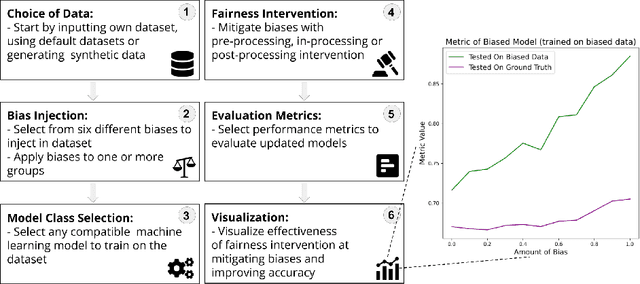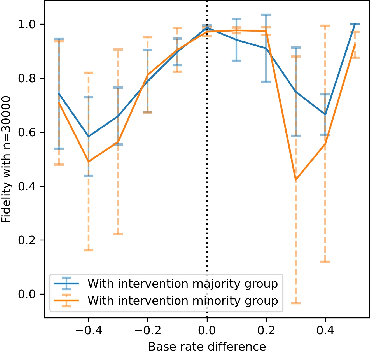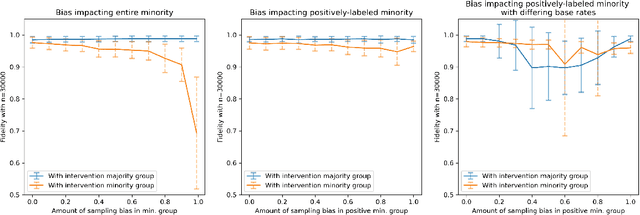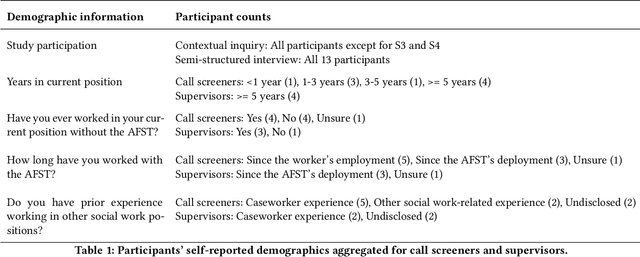Hao-Fei Cheng
A Sandbox Tool to Bias-Test Fairness Algorithms
Apr 21, 2022



Abstract:Motivated by the growing importance of reducing unfairness in ML predictions, Fair-ML researchers have presented an extensive suite of algorithmic "fairness-enhancing" remedies. Most existing algorithms, however, are agnostic to the sources of the observed unfairness. As a result, the literature currently lacks guiding frameworks to specify conditions under which each algorithmic intervention can potentially alleviate the underpinning cause of unfairness. To close this gap, we scrutinize the underlying biases (e.g., in the training data or design choices) that cause observational unfairness. We present a bias-injection sandbox tool to investigate fairness consequences of various biases and assess the effectiveness of algorithmic remedies in the presence of specific types of bias. We call this process the bias(stress)-testing of algorithmic interventions. Unlike existing toolkits, ours provides a controlled environment to counterfactually inject biases in the ML pipeline. This stylized setup offers the distinct capability of testing fairness interventions beyond observational data and against an unbiased benchmark. In particular, we can test whether a given remedy can alleviate the injected bias by comparing the predictions resulting after the intervention in the biased setting with true labels in the unbiased regime -- that is, before any bias injection. We illustrate the utility of our toolkit via a proof-of-concept case study on synthetic data. Our empirical analysis showcases the type of insights that can be obtained through our simulations.
Improving Human-AI Partnerships in Child Welfare: Understanding Worker Practices, Challenges, and Desires for Algorithmic Decision Support
Apr 05, 2022

Abstract:AI-based decision support tools (ADS) are increasingly used to augment human decision-making in high-stakes, social contexts. As public sector agencies begin to adopt ADS, it is critical that we understand workers' experiences with these systems in practice. In this paper, we present findings from a series of interviews and contextual inquiries at a child welfare agency, to understand how they currently make AI-assisted child maltreatment screening decisions. Overall, we observe how workers' reliance upon the ADS is guided by (1) their knowledge of rich, contextual information beyond what the AI model captures, (2) their beliefs about the ADS's capabilities and limitations relative to their own, (3) organizational pressures and incentives around the use of the ADS, and (4) awareness of misalignments between algorithmic predictions and their own decision-making objectives. Drawing upon these findings, we discuss design implications towards supporting more effective human-AI decision-making.
 Add to Chrome
Add to Chrome Add to Firefox
Add to Firefox Add to Edge
Add to Edge